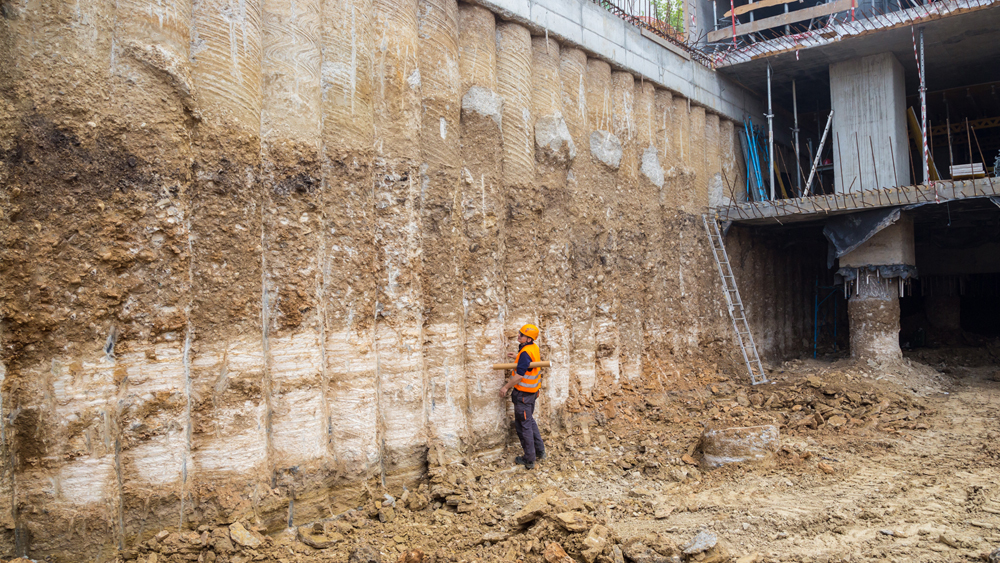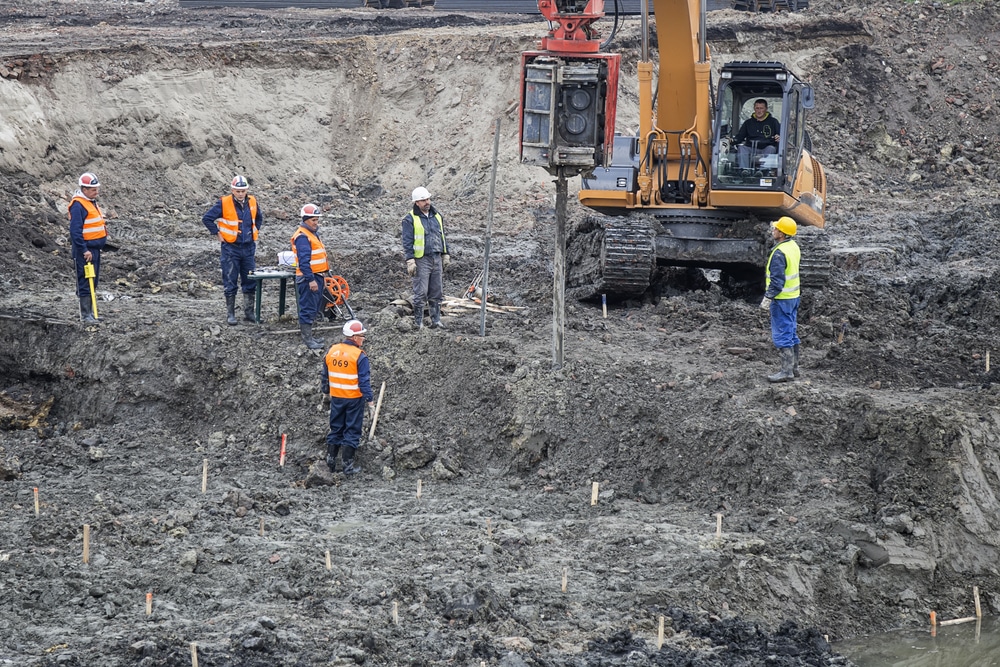Comprehending the Fundamentals: Concerning Geotechnical Engineering in Modern Construction
Comprehending the Fundamentals: Concerning Geotechnical Engineering in Modern Construction
Blog Article
Checking Out the Fundamental Principles and Applications of Geotechnical Design for Sustainable Facilities Advancement
The junction of geotechnical design and sustainable infrastructure advancement provides an engaging chance to boost both design efficacy and ecological obligation. By recognizing key concepts such as soil auto mechanics, site characterization, and structure design approaches, designers can develop services that are not only effective but also minimize environmental footprints.
Secret Principles of Geotechnical Engineering
Comprehending the vital concepts of geotechnical design is vital for creating lasting framework (all about geotechnical engineering). This self-control concentrates on the communication in between soil, rock, and structures, playing a vital function in the security and performance of design jobs. The primary concept is the evaluation of subsurface conditions through site examinations, which provide beneficial info about dirt residential properties, stratification, and groundwater levels
An additional crucial principle is the application of efficient anxiety theory, which assists engineers comprehend just how soil habits changes under differing tons. This understanding is crucial for reviewing the bearing capacity of structures and making certain that frameworks can endure both fixed and dynamic forces.
Furthermore, the concepts of soil-structure communication and slope stability are indispensable to geotechnical style, as they educate choices on the placement and style of retaining embankments, wall surfaces, and slopes.
Finally, geotechnical engineers must consider sustainability by promoting using locally sourced materials, lessening ecological impact, and enhancing designs for longevity. By sticking to these principles, geotechnical engineering adds considerably to the creation of lasting and resistant framework that satisfies the demands of culture while securing the environment.
Soil Mechanics and Its Significance
Soil mechanics works as the structure of geotechnical engineering, offering the scientific principles needed to examine the behavior of dirt under numerous problems. Comprehending soil auto mechanics is vital for anticipating how soil will react to loads, changes in wetness material, and other environmental variables. This expertise permits designers to make structures that can endure the pressures exerted by the soil and ensure stability and safety and security.
The study of dirt auto mechanics includes various aspects, including soil classification, shear permeability, toughness, and compressibility. These variables influence the layout of foundations, keeping walls, and various other geotechnical frameworks, making it necessary to evaluate dirt buildings precisely. For example, the shear toughness of soil directly impacts the stability of excavations and inclines, while compressibility impacts settlement predictions for structures.
Additionally, soil mechanics plays an essential function in lasting infrastructure development. By comprehending the soil's habits, engineers can minimize ecological effects, optimize product use, and enhance the long life of frameworks. This integration of dirt mechanics right into geotechnical design practices not just ensures safety however also contributes to the total sustainability of building and construction tasks, promoting reliable source monitoring and environmental stewardship.
Site Characterization Techniques
Effective site characterization strategies are crucial for gathering essential details concerning subsurface conditions before building and construction - all about geotechnical engineering. These strategies supply useful insights into dirt homes, rock formations, groundwater degrees, and prospective geohazards, therefore educating job design and mitigating threats
One widely used approach is piercing, which enables for direct tasting of dirt and rock layers. This can be matched by in-situ testing, such as Conventional Penetration Examinations (SPT) and Cone Penetration Examinations (CPT), to assess article dirt strength and stratification. Geophysical techniques, consisting of seismic refraction and electric resistivity surveys, allow non-invasive analysis of subsurface materials and frameworks, supplying a more comprehensive viewpoint on geological conditions.
Furthermore, laboratory screening plays a crucial role in assessing soil examples gotten from boring. Examinations such as grain dimension analysis, Atterberg limitations, and triaxial shear tests generate critical information on soil behavior under different loading conditions.
Including these site characterization methods not only improves the understanding of website problems yet also supports sustainable framework development by guaranteeing that projects are made with ideal safety margins and performance specifications. Hence, a thorough website characterization is crucial for informed decision-making in geotechnical design.
Foundation Style Strategies
Foundation layout methods are vital for guaranteeing the security and longevity of frameworks in numerous geotechnical contexts. These strategies begin with a complete site investigation, that includes dirt screening and evaluation to establish the physical homes of the subsoil. Understanding dirt habits under load is important for choosing the appropriate structure type, whether deep or superficial.
Superficial structures, such as spread grounds or mat structures, are normally utilized when appropriate dirt layers are readily available near the surface area. Alternatively, try this web-site deep structures, such as piles or pierced shafts, are utilized in scenarios where surface soils are insufficient to support structural loads.

Sustainable Practices in Geotechnical Engineering
The combination of lasting techniques in geotechnical engineering plays a crucial duty about geotechnical engineering in improving the ecological and financial practicality of infrastructure tasks. By prioritizing source effectiveness and reducing environmental influences, engineers can add to the development of durable facilities systems.
One secret sustainable technique entails the usage of different materials, such as commercial byproducts and recycled aggregates, which can reduce the demand for virgin sources and lower carbon exhausts. In addition, dirt stablizing techniques, consisting of the application of bioengineering methods, boost dirt residential or commercial properties while promoting environmental balance.
Moreover, the execution of sophisticated geotechnical modeling and monitoring modern technologies enables much better prediction and management of ground problems, bring about optimized style solutions and resource utilization. These technologies likewise facilitate the evaluation of long-lasting efficiency, guaranteeing that structures continue to be useful and secure over their life expectancy.

Conclusion
In final thought, the concepts and applications of geotechnical engineering play a crucial role in sustainable framework development. Emphasizing dirt mechanics, website characterization, and cutting-edge foundation layout approaches enhances the resilience and efficiency of structures. The combination of sustainable methods, consisting of making use of locally sourced materials and advanced stabilization methods, not only enhances source usage but additionally advertises environmental stewardship. Ultimately, these efforts add to the development of infrastructure that properly meets societal demands while minimizing eco-friendly effect.
By understanding essential concepts such as soil auto mechanics, website characterization, and structure style strategies, designers can develop options that are not only efficient yet also reduce eco-friendly impacts.Dirt mechanics serves as the structure of geotechnical design, supplying the scientific principles needed to assess the actions of soil under various problems. Recognizing dirt technicians is crucial for predicting exactly how soil will respond to tons, modifications in dampness content, and other ecological factors.The research study of dirt auto mechanics incorporates various elements, consisting of soil category, shear compressibility, stamina, and leaks in the structure. These aspects affect the design of structures, maintaining wall surfaces, and various other geotechnical structures, making it essential to assess soil properties properly.
Report this page